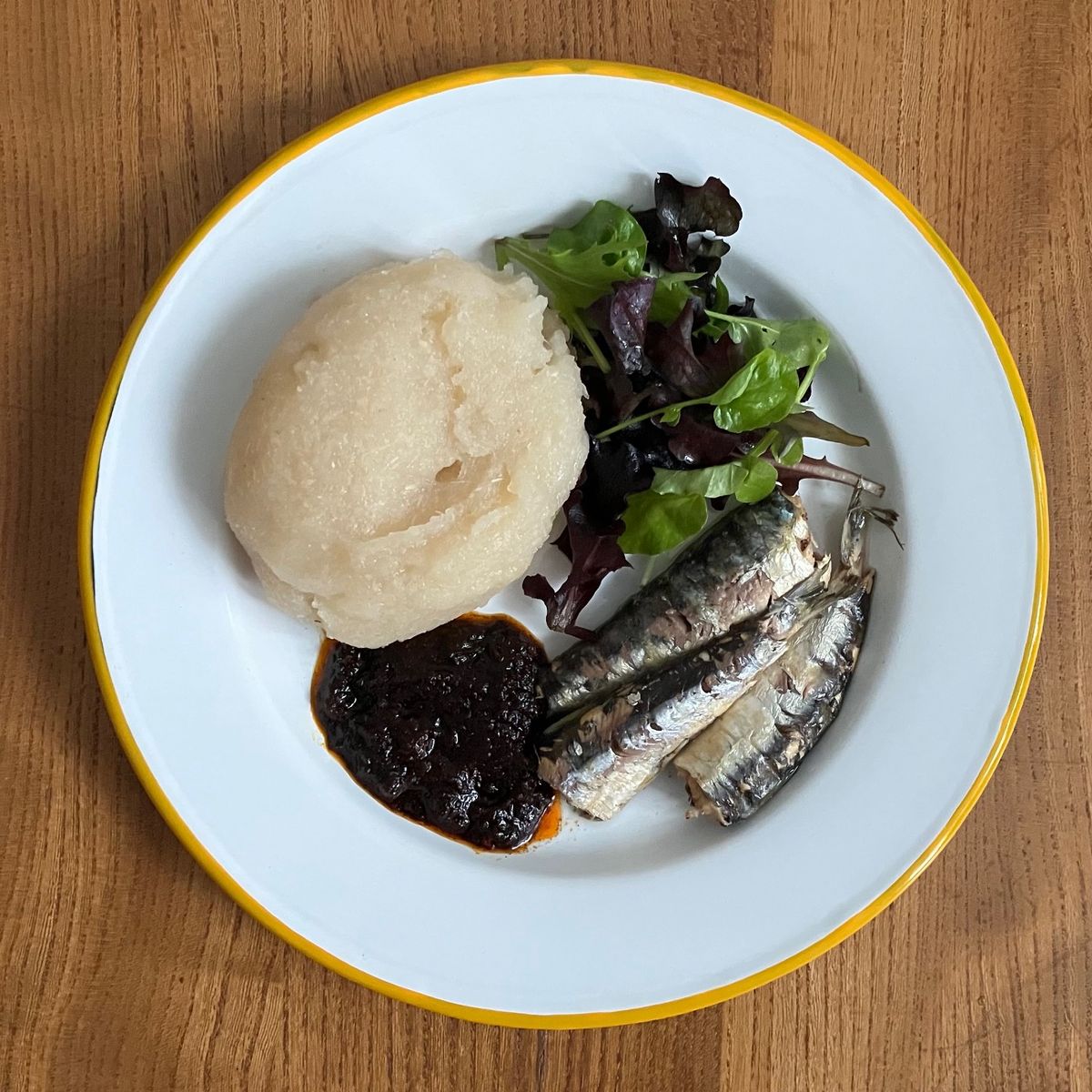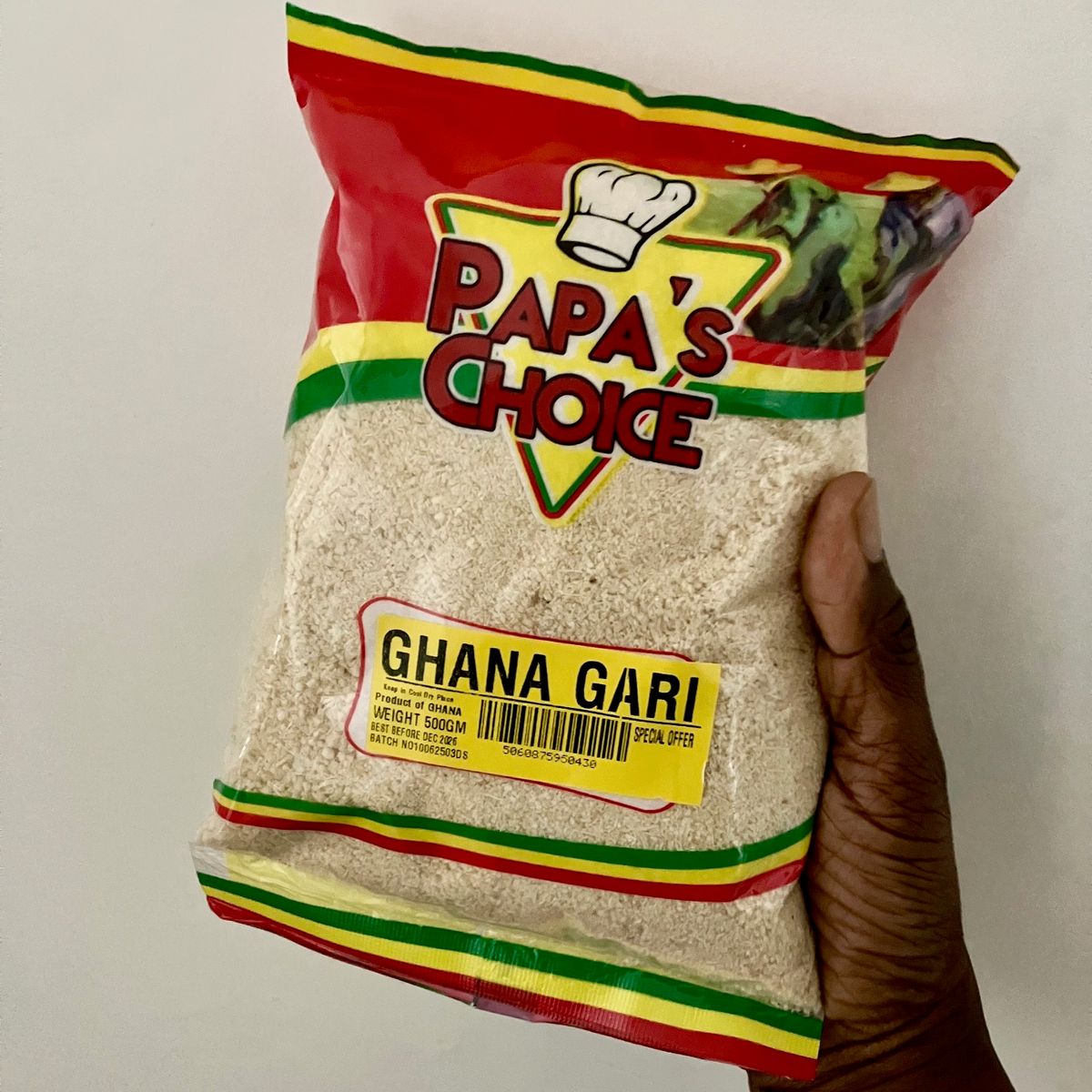
Gari
Gari (also known as garri, eba, krain krain, kran kray, etc) is flaked and dried, fermented cassava, commonly eaten across West Africa.
Cassava is a root vegetable originating from South American. Portuguese traders introduced it to West Africa in the 16th Century. Since then, it has become a staple dish, consumed across the region and diaspora.
Gari can be made from scratch, which involves grating, soaking and fermenting the peeled cassava tubers, then straining them, before sieving and frying to remove moisture. Ready processed gari can be easily found in African and Caribbean stores.

Fermentation is an essential part of the process, eliminating naturally occurring toxins (including cyanide) in the cassava. Gari is rich in vitamin C and fibre, it is also low in fat. Being fermented, gari is also beneficial for gut health.
Gari is cheap, versatile and easy to prepare. Gari can be used in numerous ways including as a swallow food (dumpling), added to stews, as a sweet porridge, etc. It can be eaten hot or cold. The dish shown in the main picture is a common meal in Ghana, especially loved by students (gari, sardines, shito hot pepper sauce, and salad) - cheap, quick, easy to make, and nutritious.